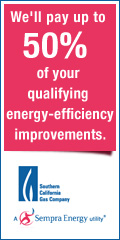
| Archives/Subscribe | www.clfp.com | Contact Us | November 1, 2011 |
CARB ADOPTS UNFINISHED CAP-AND-TRADE REGULATION
On October 20, 2011 the California Air Resources Board unanimously adopted the final cap-and-trade regulation, despite hours of public testimony from business and industry regarding the incompleteness of the regulation. The cap-and-trade program joins the other emissions reducing measures including standards for ultra-clean cars, low-carbon fuels and renewable electricity. The Board also approved an adaptive management plan to closely monitor the effect of the program on localized air quality and forests, in particular. CLFP testified to the overall incompleteness of the regulation and made specific points as to CARB's continuing failure to provide the food processing industry with a workable benchmark. CLFP pointed out that the medium leakage designation for food processors will only increase costs for facilities facing serious foreign trade challenges. Specific reference was made to CARB’s classification of food processors under a three-digit NAICS code designation. In effect, CARB has combined fruit, vegetable and dairy operations with meat processing and wet corn milling. Most other industries have NAICS designations of four or more digits. As part of the cap-and-trade regulation, CARB did pass a resolution ordering CARB’s Executive Director to fund a study on the ability of food processors to pass on increased costs from AB 32 in light of the significant competitive threat both in the U.S. and abroad at the urging of CLFP and Ag Council. The regulation will cover 360 businesses representing 600 facilities and is divided into three phases: the first, beginning in 2013, will include all major industrial sources such as manufacturers and food processors along with electricity utilities; the second, starting in 2015, brings in distributors of transportation fuels, natural gas and other fuels. The final phase starts in 2018. In an attempt to ensure a gradual transition, CARB will provide the majority of allowances to all industrial sources during the initial period (2013-2014) pursuant to the designed plan to reward the most efficient companies. Less efficient companies may need additional allowances to cover their emissions. Allowances will be available for purchase at regular quarterly auctions conducted by CARB, or the companies can choose to buy them on the market. The first auctions of allowances (for 2013 allowances) are slated for August and November 2012. Electric utilities will also be given allowances to be sold at auction for the benefit of their ratepayers and to help achieve AB 32 goals. Eight percent of a company’s emissions can be covered using credits from CARB-certified offset projects in uncapped sectors such as forestry and agriculture. Included in the regulation are four protocols, or systems of rules, for quantifying offset credits: forestry management; urban forestry; dairy methane digesters; and, the destruction of existing stores of ozone-depleting substances in the U.S. (mostly in the form of refrigerants in older refrigeration and air-conditioning equipment). Article written by John Larrea, Government Affairs Director |
|
| CALIFORNIA LEAGUE OF FOOD PROCESSORS 2485 Natomas Park Dr., Suite 550 Sacramento, CA 95833 Phone: (916) 640-8150 Fax: (916) 640-8156 www.clfp.com |
 |


